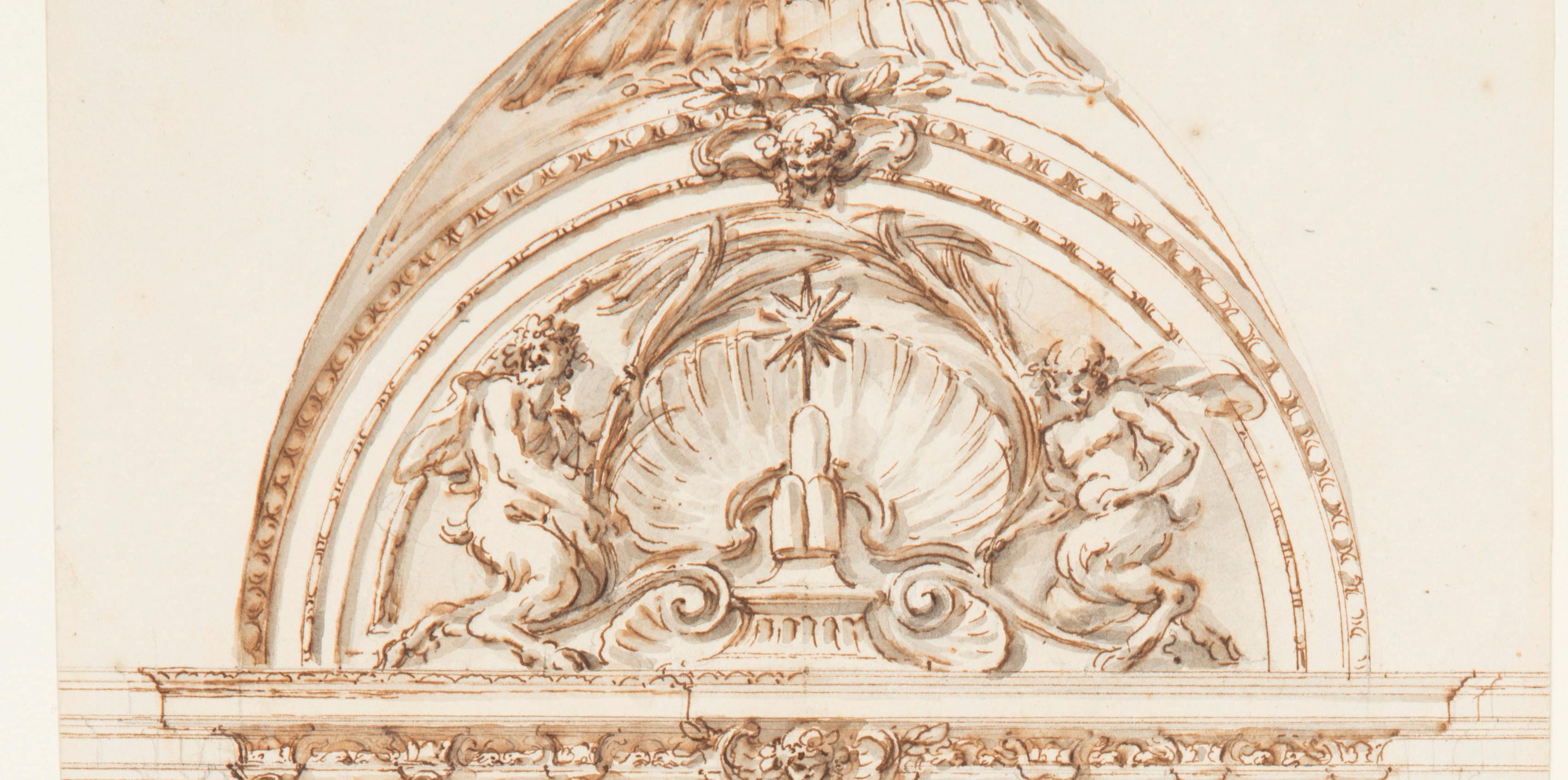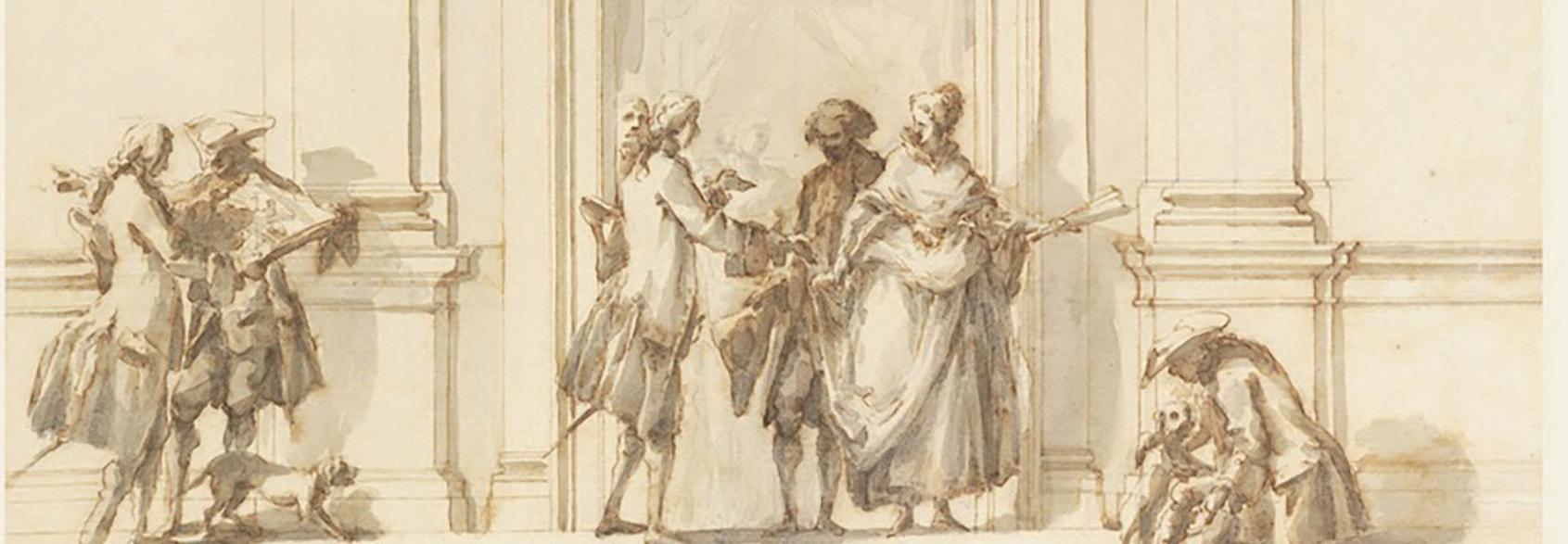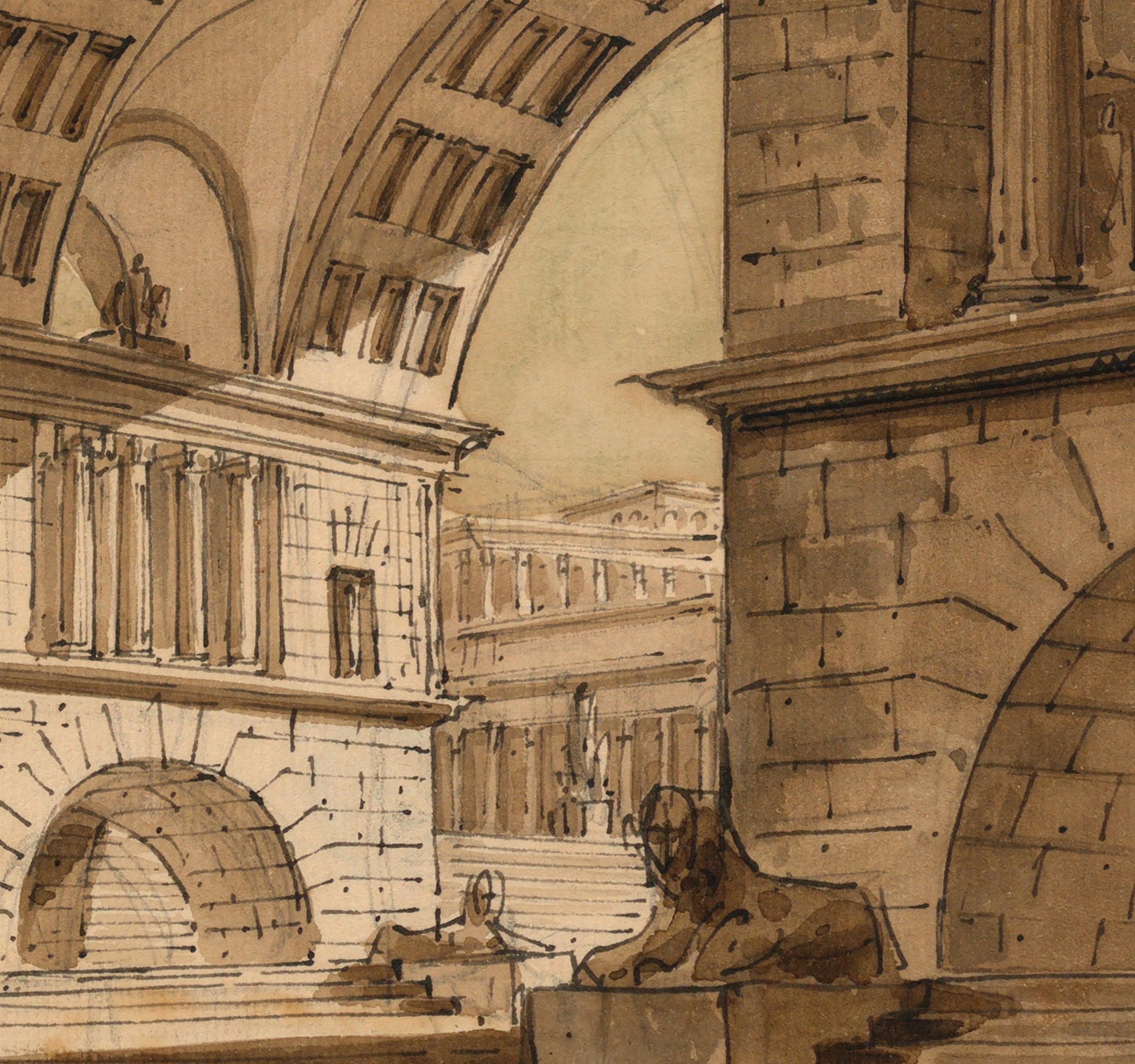
2 minute read
VILLA DESIGN, EAST PORTAL GRAND GALLERY
DOLPHINS & SPHINXES
Sopra A wall of a pointed vault into which is inscribed a half circle with a shell on top and a mask at the point. In the lunette, the star and the threemount of the Albani appear upon a pedestal in front of a shell, in the center of a broken pediment on the cornices of which sit satyrs with palm branches. Above the door frame is a half circle with a trophy of arms of Cardinal Albani. Mezzo Above the straight entablature of the door-case, the center, is a vase with dolphins beside it and garlands hanging cross-like from the backs of crouching sphinxes. A prior suggestion has been erased. The entablature is richly decorated and subdivided horizontally by consoles with ram’s heads In the frieze, in the place of triglyphs, alternate a female herma and two figures beside a candelabrum. Baso Originally in the door, depicted to the right, a lady with a fan, a gentlemen, with his left hand outstretched and carrying a walking stick, and a dog appear.
Advertisement

Carlo Marchionni Design For The East Portal, Grand Gallery Villa Albani, Rome, Italy Ca. 1755


Marchionni incorporated human figures into a vast array of drawings for domestic, sacred, and festival buildings in a way that was virtually unparalleled in the European design tradition. In the history of architectural drawing up to 1800, figures appear often in urban, architectural, or landscape. Rarely do they appear in elevations. Il Coppio

A POPULAR MAN
Born and raised in the artists’ quarter in Rome that stretched from the Piazza del Popolo to the Piazza di Spagna, Carlo Marchionni was an Italian architect. Recognized in his own time as a consummate draftsman, Marchionni was a practitioner in multiple spheres. He was not only an accomplished sculptor and a distinguished architect, but also a designer of festival decorations, theatrical scenery, furnishings, wall decorations, tableware, visiting cards, and a caricaturist as well. Marchionni’s early career was fostered by his lifelong friend Cardinal Alessandro Albani, a great collector of antiquities. Marchionni had come to Albani’s attention after winning first prize in the Academy’s Concorso Clementino in 1728. Marchionni mixed in the artistic and intellectual circles. Making the most of his connections at the highest rungs of the Roman social ladder, Marchionni was elected to the most prestigious and influential academies of his day. Marchionni’s mature style exhibits a richly-detailed idiomatic repertory on the cusp of Late Baroque and Neoclassicism that may be compared with the similar style by his Italian contemporaries. 7
Ti Vedo a La!
10 a.m. to 6 p.m. daily Closed Thanksgiving and December 25

Pay-What-You-Wish Tuesday 6 p.m. to 8 p.m.
Adults - $18 | Visitors with Disabilities $10 | Seniors $12 | Students $9 | Members and 18 and under free Buy your tickets online to save $2 per ticket.
Cooper Hewitt is the nation’s only museum dedicated to historic and contemporary design, with a collection of over 210,000 design objects spanning thirty centuries. Located in the landmark Andrew Carnegie mansion and boasting a beautiful public garden, Cooper Hewitt makes design come alive with unique temporary exhibitions and installations of the permanent collection.


